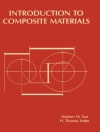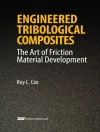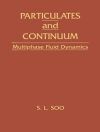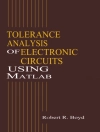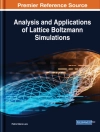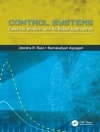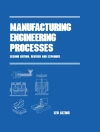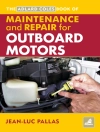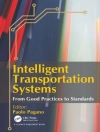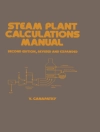In the field of aeronautical dynamics, this book offers readers a
design tool which enables them to solve the different problems that
can occur during the planning stage of a private project. The
authors present a system for the modeling, design and calculation
of the flying qualities of airplanes and drones, with a complete
mathematical model by Matlab/Simulink. As such, this book may be
useful for design engineers as well as for keen airplane
amateurs.
The authors expound the various phases involved in the design
process of an airplane, starting with the formulation of a design
tool, under the form of a 0D mathematical model (dimensionless,
time dependent), before moving on to explore the behavior of the
airplane under certain circumstances and offering insights into the
optimization of airplane flying qualities. As validation of this
model, they present a numerical result, drawn from data collected
on an existing plane – the Concorde.
The dimensional process is then explored and applied to a realistic
drone project. Recommendations on the development of the principal
characteristics of the plane (i.e. mass distribution, air load,
wing span) are given.
Contents
1. 0D Analytical Modeling of the Airplane Motions.
2. Design and Optimizationof an Unmanned Aerial Vehicle
(UAV).
3. Organization of the Auto-Pilot.
This book provides a description of the modeling, design, and
calculation of the aeronautical qualities of airplanes and drones.
Divided into several parts, this book first summarizes all the
necessary theoretical developments about the equations of motions
and trajectory calculations of the machine. It then goes on to
describe practical building processes and considers piloting
methods. The last part makes a comparison between theoretical
calculations and measured recorded data of the real flying
machine.
Accompanied by a complete mathematical model in MATLAB/SIMULINK
قائمة المحتويات
Introduction vii
Chapter 1. 0D Analytical Modeling of the Airplane Motions
1
1.1. References: axis systems on use 2
1.1.1. Galilean reference: R0 2
1.1.2. Airplane reference: RB (body) also called ‘linked
reference’ 2
1.1.3. Resultant angular velocity 6
1.2. Equations of motion of the airplane 9
1.2.1. Expression of Newton’s principle 10
1.2.2. Expression of the dynamic momentum 11
1.3. Description of external forces and torques 14
1.3.1. Aerodynamic forces and torques 14
1.3.2. Sign rules 17
1.4. Description of aerodynamic coefficients 18
1.4.1. Drag coefficient: Cx 19
1.4.2. Side lift coefficient CY 19
1.4.3. Vertical lift due to attack angle: CZalpha 20
1.4.4. Lift due to pitch angular velocity: CZq 21
1.4.5. Roll coefficients (due to beta, deltal , p) 22
1.4.6. Pitch coefficients (due to alpha, deltam , q , static
curvature) 25
1.4.7. Yaw coefficients (due to beta, deltan, r) 27
1.5. Aerodynamic data of a supersonic airliner for valuation of
the software 32
1.6. Horizontal flight as an initial condition 33
1.7. Effect of gravitational forces 36
1.8. Calculation of the trajectory of the airplane in open space
39
1.9. Validation by comparison with ONERA Concorde data 47
1.10. Definitions of aerodynamic coefficients and derivatives
51
1.10.1. Aerodynamic coefficients 51
1.10.2. Total lift coefficient 51
1.10.3. Drag characteristics: (dimensionless) 55
1.10.4. Side lift coefficient: CY (dimensionless) 58
1.10.5. Roll coefficients 59
1.10.6. Pitch coefficients 62
1.10.7. Yaw coefficients 66
Chapter 2. Design and Optimization of an Unmanned Aerial
Vehicle (UAV) 69
2.1. General design of the drone 71
2.2. Weight estimation 72
2.3. Size estimation 73
2.4. Mass and inertia evaluation 76
2.4.1. Mass evaluation 76
2.4.2. Measurement of the roll inertia (A) 77
2.4.3. Measurement of pitch inertia (B) 79
2.4.4. Measurement of yaw inertia (C) 80
2.5. Convergence toward the target 82
Chapter 3. Organization of the Auto-Pilot 91
3.1. Position of the drone in open space 93
3.2. The Dog Law 95
3.3. Flight tests 98
3.4. Altitude control system 100
3.5. Altitude measurement on an actual drone 102
Bibliography 111
Index 113
عن المؤلف
Mr Anh-Tuan PHAM graduated from the INSTITUTE OF SPACE AND AERONAUTICS (ISAE / TOULOUSE). Former research and development engineer in sectors like Aerospace (ONERA) and Automotive (Peugeot) during the period 1962-2002. Now retired and Professor of Aircraft and Automotive at ESTACA (Paris).
Mr Emmanuel GRUNN, former specialist engineer of mechanical design inside RENAULT affiliates. Now Professor of Automatics Systems at ESTACA (Paris).


